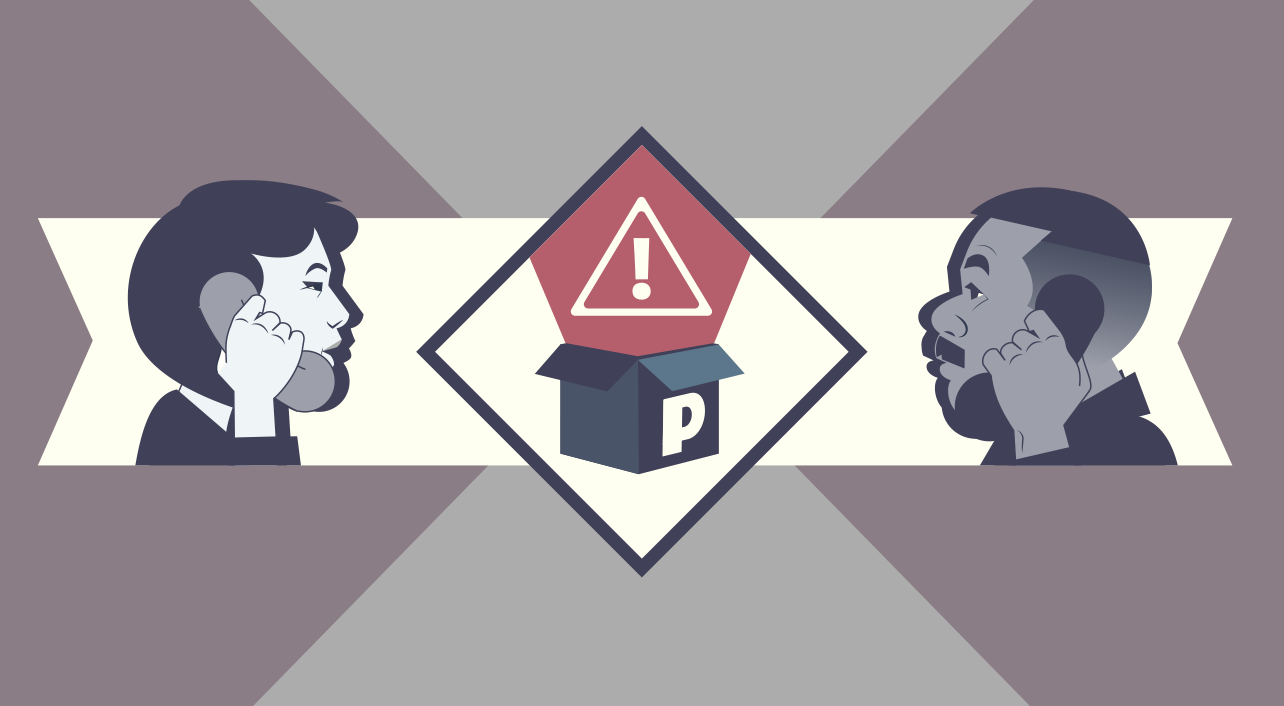- sales
- Blog post
Revealing risks: Sales booster or sales killer?
No matter what you sell, there’s a likelihood that your product or service carries some risk. Financial investments may lose value. Products might break. Software becomes outdated. A consultant’s advice may not achieve the desired results. Even insurance policies carry risk – if nothing bad happens, the premiums are just money down the drain.
Some risks you, the seller, must disclose. And even when disclosure isn’t required, it’s usually a good idea if you’re looking to create a long-term relationship with a buyer. Nothing gets a vendor fired faster than a nasty surprise.
But there’s another good reason to talk about risk. Research suggests that revealing risk can actually improve your odds of getting the sale – depending on when and how you do it.
Which way to go?
There are a number of ways you could tell prospects about product or service risk factors. You could, for example, reveal these risks early in the sales process but bend over backwards to reassure the buyer that they’re highly unlikely. Or you could reveal the risks early without trying to soft-pedal them. Or you could wait and bring up these risks during the close, after the buyer is fully engaged.
To find out which of these ways of proceeding is best, let’s take a look at an experiment carried out by psychology professors at NYU, Tel Aviv University in Israel, and the European business school INSEAD.
The experiment involved a product with a notorious downside: cigarettes. Now to be sure, cigarettes are uniquely risky and you’re probably not selling anything like that. But because they are so dangerous, cigarettes offer a precious opportunity to study how buyers process information about risk.
In the experiment, researchers showed various cigarette ads to smokers. Half of the smokers saw ads that included dire warnings about the health risks. One warned smokers to “pay attention to unusual feelings of stress or weakness” because of the risk of heart attacks or stroke. Another warned of hair loss, headaches and immune system damage. A third warned of “considerable weight gain.” The other smokers saw ads with no warnings. After viewing the ads, all the smokers were asked if they’d like to place an order for some cigarettes.
Near future vs. distant future
But here’s the twist: Some smokers were told they’d get their cigarettes within a day – what the researchers called a “near future” condition. Others would have to wait for three months for their order to arrive – what was called a “distant future” condition.
For the smokers in the near-future condition, the warnings were a deal-killer. Those who saw them ordered 75 percent fewer cigarettes. But for the smokers in the distant-future category, the warnings actually caused them to buy more cigarettes. In fact, they ordered 493% more packs of cigarettes than the smokers who’d seen no warnings.
On the face of it, the results don’t seem to make sense – especially when you consider how large these differences are. How could the exact same warnings make people less likely to buy in the short term, but more likely to buy over time?
The researchers suggest that it’s because the negative information created two competing reactions in buyers. If they had to make a decision that affected them right away, fear predominated. But when the outcome of that decision was pushed into the future, attitudes shifted. The fear faded, and buyers saw the warnings in a different light: as a sign of trustworthiness. “They’re not hiding anything,” buyers thought. And that trust made them disposed to buy more.
A follow-up experiment involving artificial sweeteners confirmed these findings. When people could order right away, those who saw ads containing health warnings ordered 94% fewer packets of sweetener. But when they had to wait a couple of weeks for delivery, they ordered 265% more packets than people who saw no warnings.
Get it out early
So what does all of this mean for you?
Clearly, it means you should go ahead and disclose the downsides. But you need to give the potential negative effects of these warnings time to dissipate, by revealing the risks early in the sales process. This may run against your inclinations — after all, you might reason, you should wait until the buyer is sold on the benefits before you bring up the downsides. But according to the research, this is counterproductive. What actually happens is that if you wait until you’re trying to close to reveal the risks, the buyer’s fears for the immediate future may sink the sale.
The experiment also suggests that there’s no need to soft-pedal bad news. The health warnings in the experiment pulled no punches: among other health problems, they warned of heart disease, stroke, hair loss and weight gain.
Of course, there’s no need to go overboard when you describe the downsides of your product or service. And you don’t need to describe every conceivable drawback – only those that are relevant to your buyer. But you earn trust when you don’t try to minimize the risks or explain them away.
This blog entry is adapted from the Rapid Learning module “How and When to Disclose Risk to Prospects.” If you’re a Rapid Learning customer, you can watch the video here. If you’re not, but would like to see this video (or any of our other programs), request a demo and we’ll get you access.
The blog post and Rapid Learning video module are based on the following research study: Carmon, Z., Steinhart, Y., & Trope, Y. (2013). Warnings of Adverse Side Effects Can Backfire Over Time. Psychological Science (24)9, 1842-1847.

Get a demo of all our training features
Connect with an expert for a one-on-one demonstration of how BTS Total Access can help develop your team.



